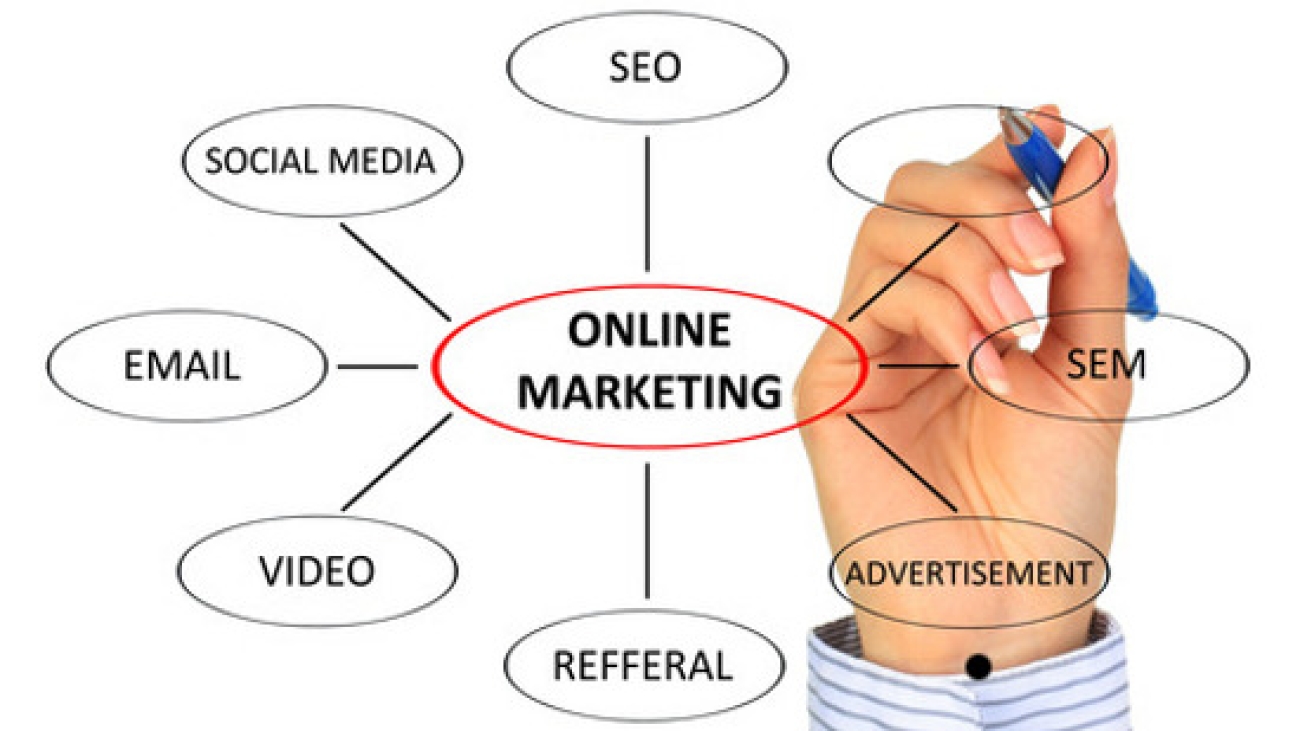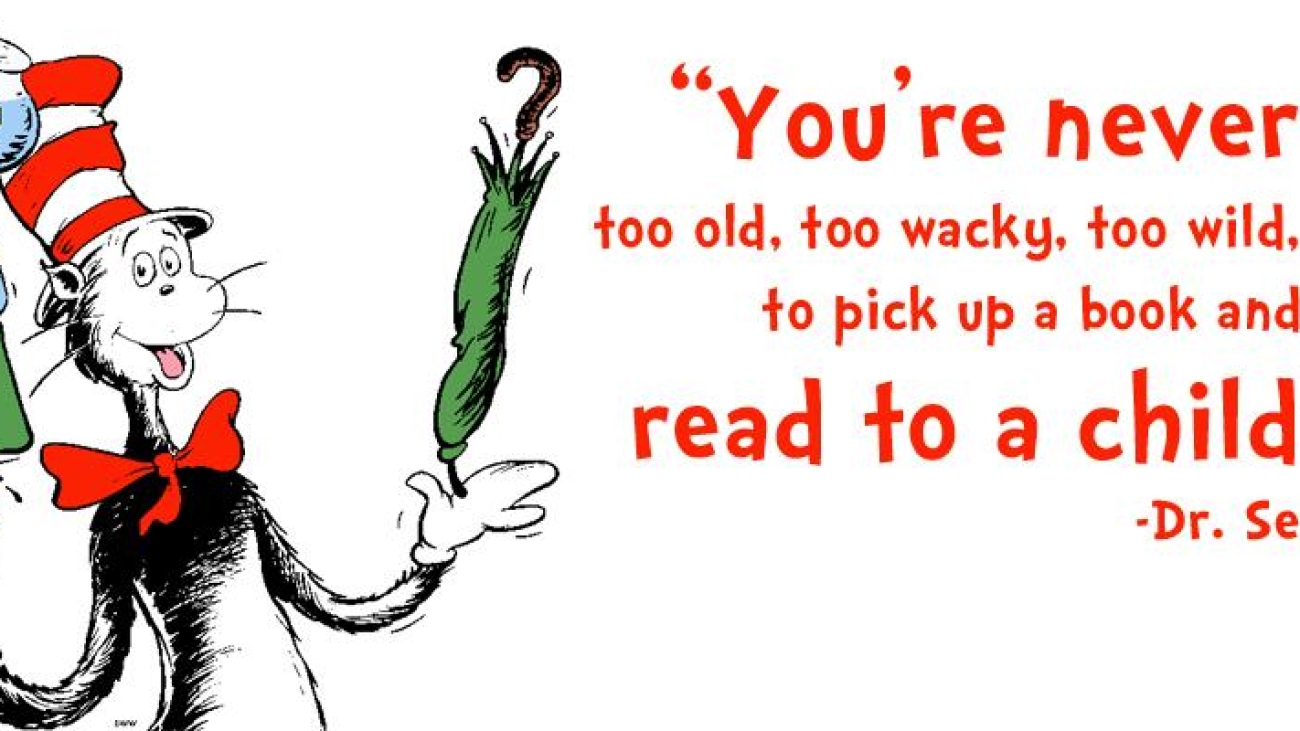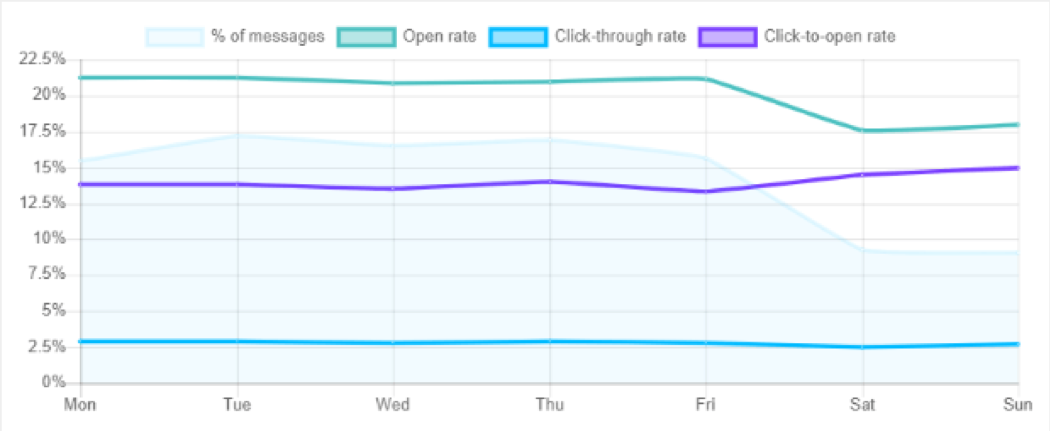Why Not Just Utilize Product Pages for Your Ecommerce Campaigns and Promotions?
Site visitors are less most likely to transform when they arrive on an item page with ads, compared to a tailored landing web page. According to Monetate, the conversion rate is considerably reduced, with site visitors transforming at half the price when they get on an item page.
Lots of item web pages disappoint ecommerce quality due to the fact that they fall short to include effective methods. They frequently include common, unengaging content and a dull design that attempts to appeal to a broad audience, instead of focusing on the target market. Additionally, these web pages have a tendency to be cluttered with attractive web links that draw away buyers’ attention and impede them from purchasing.
Touchdown pages enable you to guide a visitor’s emphasis in the direction of a certain product or service and guide them via a personalized path towards making a purchase. These web pages are extremely focused, can be tailored to individual choices, and have a greater possibility of conversion contrasted to other pages.
Not obtaining the results you want from sending web traffic to your on-line store? Start building your very own ecommerce touchdown web pages today with a cost-free 14-day test of Unbounce.
10 Ecommerce Touchdown Page Instances
LIV Watches
TRIBE
Climb Shoes
BoxyCharm
Thistle
waterdrop
Infinite Moon
Solo Range
Nathan Sports
Meowbox
Instance # 1: LIV Watches
Industry: Apparel
Design: Storefront
Picture thanks to LIV Watches. (Click to see the entire point.).
What This Ecommerce Example Reveals: You Need to Flaunt Your Product in Different Ways.
Common online shops generally present their items in a typical way, frequently with a slide show of photos on top of the web page. Nevertheless, LIV Watches offers a compelling image of the effect that can be accomplished by showcasing a product in various means throughout the entire web page.
In this situation, LIV is including a special edition wristwatch in partnership with pro cyclist TJ Eisenhart. Notification exactly how, as you scroll down, they reveal the watch featured in different lights, various surroundings, and various situations. You get to see a video clip overview of the watch, close-ups of the different attributes, and also a rather slick side-profile that really flaunts the craftsmanship.
It’s a wonderful example of how ecommerce online marketers can break the mold of “conventional” product touchdown web pages to reveal customers the details they in fact intend to see.
What Else We Love Concerning This Landing Web page:.
LIV produces a feeling of urgency with this limited edition item. If you want this specific watch, you recognize that you require to make a purchase decision quickly. (Tick, tock.).
This brand name is– partly– regarding lifestyle. That really comes through in the video, which explores optimistic sentiments like interest, ambition, and truth to oneself
All of the photography (together with the video and additional computer animations) really offers customers an up-close take a look at the workmanship, so they know specifically what they’re purchasing.
Example # 2: TRIBE
Sector: Food & Drink.
Model: Store & Subscription.
Web Page Type: Click-Through.
Picture thanks to people. (Click to see the whole thing.).
What This Ecommerce Example Exposes: You Can Make Special Offers to Shut More Customers.
Establishing limited-time bargains or special offers on your routine ecommerce store can be a massive pain. Conventional product web pages frequently do not appropriately display a bargain, and they can be pretty rigid if, for example, you only desire particular people to be able to access the promo.
This instance from TRIBE is worth analyzing because it shows a strategic strategy by their advertising team. They produced an “Unique Shortlist Deal” on a touchdown web page to selectively target details receivers for the promo, as opposed to making it easily accessible to all site visitors.
Additionally, as this landing web page was developed with Unbounce, the people team had complete freedom in figuring out just how they showcased the promotion. In order to efficiently promote the deal, the team integrated the bargain’s worth right into numerous elements such as the call-to-action (” Enjoy Your Initial People Box for ₤ 2″) and the registration specifics (” Customized pack made to fit your preferences”). Excellent method!
What Else We Love Regarding This Touchdown Web page:.
Highlighting athleticism on the web page, such as showcasing a training photo listed below the main section, offers to demonstrate the value of these efficiency products and their target audience. The visibility of social proof better enhances the allure of the deal. Testimonials from a well-known client testimonial system, along with endorsements from prominent media sources and supermarket brand names, are included to infuse count on and confidence in potential clients.
Industry: Garments.
Design: Store.
Page Kind: Click-Through.
Photo thanks to Climb Footwear. (Click to see the whole thing.).
What This Ecommerce Instance Exposes: You Must Focus on the Product Particulars Your Clients Care About Most.
If you’re marketing garments that’s even more function than fashion (like a shoe that’s designed to fix your walking stride), it is essential to place emphasis on the technicians of how your product works. Case in point: this example from Climb Footwear.
Not just does this touchdown page display exactly what enters into each footwear, however it also explains why that makes such a difference. (Now, I simply need to find out what the hell “enough lateral stability” suggests.) The web page gets rid of all the fluff and concentrates on responding to one very specific concern: Just how does this shoe in fact function?
Contrast this to many product web pages, which usually get shed in the details that don’t matter as much. Producer recommendations, extensive item summaries, relevant items– if your clients don’t in fact care about these things, they may just be sidetracking them from making a purchase.
What Else We Love Concerning This Touchdown Web page:.
Ascent uses an expanded view of its footwear to display the technical components that add to its comfort and resilience.
By consisting of an explainer video clip, Climb is able to specify on the value proposals of the item without using up much space on the web page.<br>
The tidy, single-column format and brief size suggest that site visitors aren’t being overwhelmed with information. By doing this, they can focus on Ascent’s core message.
Wanna see all 27 ecommerce landing web page instances? Download The Ultimate Ecommerce Landing Page Lookbook to aid inspire your next high-converting masterpiece.
Example # 4: BoxyCharm.
Sector: Aesthetic.
Design: Subscription.
Web Page Type: Lead Generation.
Picture thanks to BoxyCharm. (Click to see the entire point.).
What This Ecommerce Instance Exposes: You Can Utilize Touchdown Pages to Develop Buzz for Item Launches.
Launching a brand-new item is constantly exciting– yet getting words bent on consumers can often be a challenge. That’s where this example from BoxyCharm enters the mix.
To help advertise their brand-new high end appeal registration box, their advertising and marketing team assembled a promotional touchdown page that constructs expectancy for the item and guides interested buyers to enter their email address. This list building technique verified to be fairly helpful– when the membership box officially released, the group at BoxyCharm currently had a big listing of shoppers who were interested.
Minds and charm? This instance really is the full package.;-RRB-.
What Else We Love Concerning This Landing Page:.
BoxyCharm’s elegant layout, constant color pattern, and vibrant parallax scrolling develop an aesthetically spectacular site that successfully communicates their brand name’s visual. The landing web page duplicate satisfies the younger generation by including pertinent hashtags, while the consisted of social web links urge site visitors to engage with the brand on numerous systems. Additionally, the video clip showcasing the item’s advancement procedure shows BoxyCharm’s dedication to customer satisfaction by highlighting their desire to pay attention to comments and adapt their method as necessary.
Example #5: Thistle
Industry: Food & Drink.
Design: Membership.
Page Kind: Click-Through.
Image courtesy of Thistle. (Click to see the whole thing.).
What This Ecommerce Example Reveals: You Should Constantly Enhance Your Landing Web Page for Mobile Instruments.
Making acquisitions on your phone is the new norm. According to Google, when people have an unfavorable experience on mobile, they are 62% less likely to make a purchase from your brand in the future. That implies for each page you produce, you need to be maximizing it for smart devices and tablet computers too.
This instance from Thistle demonstrates how easy it can be to optimize your web page for mobile phones. Utilizing Unbounce, they developed a landing web page for their plant-based dish registration solution that looks stunning despite which sort of tool you’re making use of.
What Else We Love Concerning This Touchdown Web page:.
The page does a fantastic task highlighting the unique value proposition of this dish membership solution: nutrition-optimized, ready to eat, plant-based dishes made with premium active ingredients.
Thistle knows its audience. They comprehend just how health-conscious their clients are, and made sure to include additional information regarding just how each Thistle dish is curated to consist of the right mix of macronutrients, vitamins, and minerals.
Example # 6: waterdrop.
Market: Food & Beverage.
Version: Store.
Page Kind: Click-Through.
Picture courtesy of waterdrop.
What This Ecommerce Instance Exposes: You Can Target Specific Audiences to Get Better Outcomes.
While your product pages generally have to be common sufficient to talk to everyone at the same time, you can develop touchdown pages to talk particularly to one particular target market or utilize case. This instance from waterdrop collections the bar for targeted messaging– and, by transforming over half of all site visitors, it makes a compelling case for you to do the very same.
Every little thing on this web page is indicated for one target market: ladies. Contextual shots? Women. Testimonials? Ladies. This brand name understands who they’re talking to, and their strategy appears to be working.
What Else We Love Regarding This Touchdown Web page:.
The design is spectacular and matches the item well. Can colors be flavorful? This landing web page says they can, and our abrupt desire for something wonderful and fruity makes us think it.
The page also does a good task of leveraging social proof by including identifiable media logos and positive customer testimonials.
Example # 7: Infinite Moon.
Industry: Home.
Model: Shop.
Page Type: Click-Through.
Picture courtesy of Infinite Moon. (Click to see the entire point.).
What This Ecommerce Instance Reveals: You Ought To Always Back Up Your Insurance Claims with Your Best Reviews.
Any ecommerce marketer will certainly be able to inform you that evaluations and testimonies are some of one of the most powerful tools in your arsenal. And this instance from Infinite Moon and Wallaroo Media shows how you can utilize them more effectively on a touchdown web page to make a sale.
Whereas on a typical item web page you might just immediately surface up the latest consumer reviews, the testimonials on this web page have actually been thoroughly curated to help tell the brand name tale. Each one discuss a crucial benefit of Infinite Moon pillows: optimum convenience, serious discomfort relief, and high-quality products.
What Else We Love Regarding This Touchdown Web page:.
Utilizing lightboxes to offer site visitors an up-close sight of the product and supply extra info means that the web page isn’t littered.
InfiniteMoon profits the room above the fold, connecting their worth prop via a punchy heading and emotive hero shot.
Example # 8: Solo Cooktop.
Industry: Cookware.
Model: Store.
Page Kind: Click-Through.
Image courtesy of Solo Oven. (Click to see the entire point.).
What This Ecommerce Example Discloses: You Can Conquer Purchase Arguments Using Pictures and Other Multimedia.
Are you depending on the truth that site visitors will actually read your item descriptions? As a copywriter, I called well as any person that (and this is difficult to confess) message and bullet factors will just obtain you thus far when it pertains to getting over purchase arguments. A great deal of customers skim or miss over the material you compose, and they typically end up missing out on those key item information.
With ecommerce touchdown web pages, you have the versatility to overcome purchase objections in whichever means you believe will certainly reverberate most with your buyers.
In this example from Solo Oven, their advertising and marketing group utilizes a mix of message and visuals to address every feasible question you may have about the item as you scroll down the web page. (” What does it do?” It shields you from the flame. “Where am I gon na save all this?” Everything nests inside the range. “Can you still roast weiners?” With grooved ridges, this guard makes it less complicated than ever before to obtain your wiener roast on.).
What Else We Love Concerning This Landing Web page:.
Incorporating this product promotion with a limited-time 20% off pre-sale deal is an excellent method to motivate visitors to click with today, instead of wait up until tomorrow.
The footer at the bottom of the page reminds buyers that they’ll secure free shipping, totally free returns, and a lifetime service warranty. Every one of these assurances help to remove danger and develop count on the brand name.
Instance # 9: Nathan Sports.
Industry: Sporting activity.
Web Page Kind: Click-Through.
Picture thanks to Nathan Sports. (Click to see the whole point.).
What This Ecommerce Instance Discloses: You Can Obtain Extra Creative with Promos on Touchdown Pages.
Consistent visual branding is more crucial than ever, yet it does put limitations on how imaginative you can be with your product pages. After all, they have to exist within the better ecological community of your online store. You can not just go altering the color schemes or formatting for every new item launch!
Yet that’s why so many marketing professionals are flexing their creative thinking with their ecommerce touchdown pages instead. Take this project from Nathan Sports, for instance. It’s so different from the rest of their on-line store that it requires you take notice (and possibly put on some retro 3D glasses while you’re at it).
What Else We Love Concerning This Landing Web page:.
The style is so trendy, and Nathan completely commits to it– from the loud, neon visuals, to the flashy computer animations, to the project slogan. Incredible.
This page could feel like it’s from another era, but today’s best methods still use. Strong heading, benefits-oriented copy, rule- of-three format– it’s all below.
Nathan even includes a customized playlist to aid joggers obtain pumped with retro jams from Duran Duran, Blondie, and Run DMC. Somebody teach us exactly how to run today!
Example # 10: Meowbox.
Industry: Animal.
Design: Registration.
Page Kind: Click-Through.
Picture courtesy of Meowbox. (Click to see the entire point.).
What This Ecommerce Example Discloses: Any Kind Of Touchdown Web Page Can Be Improved With a Number Of Cat Photos.
OK, I’m mosting likely to level with you. I was basically ready to finish this write-up … yet I just couldn’t resist including this instance. Meowbox is a regular monthly registration box with toys and deals with for your favorite feline. What’s not to love?
What Else We Love Regarding This Touchdown Page:.
It’s one thing for family pet owners to say that Meowbox is terrific, but combining client testimonials with pictures of their pet cats enjoying the treats adds one more level of reputation.
The headline shares Meowbox’s primary worth proposition and, coupled with the hero shot, assists visitors recognize what they’re getting as quickly as they struck the web page.
This is a click-through touchdown page, yet Meowbox consists of a newsletter signup kind as an additional conversion goal to attempt and record those priceless email addresses. No lead left behind.
What Do the most effective Ecommerce Touchdown Pages Have in Common?
The very best ecommerce touchdown pages target one specific target market, focus on a single CTA, and include simply sufficient convincing components to aid a consumer transform. They likewise:.
Flaunt the product in several various means.
Make special offers to close even more consumers.
Focus on the information consumers appreciate a lot of.
Construct hype for future item launches.
Maximize the purchasing experience for smart phones.
Target specific target markets.
Back up insurance claims with genuine testimonies.
Conquer purchase objections
Get a lot more creative with special promos.


















































 spot to open up, and of course, thousands of potential customers.
spot to open up, and of course, thousands of potential customers.


























































